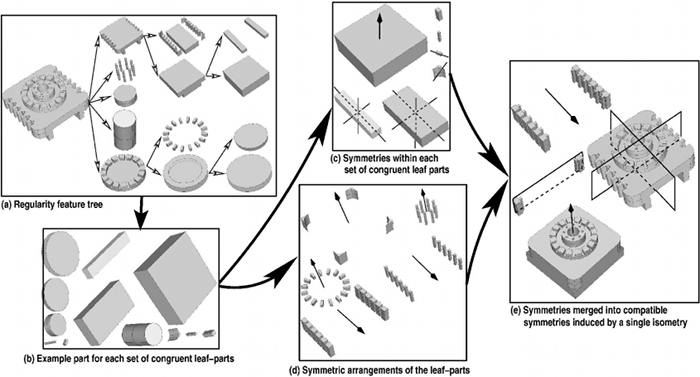M. Li, F. C. Langbein, R. R. Martin. Detecting Design Intent in Approximate CAD Models Using Symmetry. Computer-Aided Design, 42(3):183-201, 2010. [DOI:10.1016/j.cad.2009.10.001] [PDF]
Finding design intent embodied as high-level geometric relations between a CAD model’s sub-parts facilitates various tasks such as model editing and analysis. This is especially important for boundary-representation models arising from e.g. reverse engineering or CAD data transfer. These lack explicit information about design intent, and often, the intended geometric relations are only approximately present. We give a novel solution to this problem based on detecting approximate local incomplete symmetries, in a hierarchical decomposition of the model into simpler, more symmetric sub-parts. Design intent is detected as congruencies, symmetries and symmetric arrangements of the leaf-parts in this decomposition. All elementary 3D symmetry types are considered. They may be present only locally in subsets of the leaf-parts, and may also be incomplete, i.e. not all elements required for a symmetry need be present. Adaptive tolerance intervals are used for matching inter-point distances, enabling efficient, robust and consistent detection of approximate symmetries. Doing so avoids finding many spurious relations, reliably resolves ambiguities between relations, and reduces inconsistencies. Experiments show that detected relations reveal significant design intent.
![]() This work is licensed under a Creative Commons Attribution-NonCommercial-ShareAlike 4.0 International License.
This work is licensed under a Creative Commons Attribution-NonCommercial-ShareAlike 4.0 International License.

